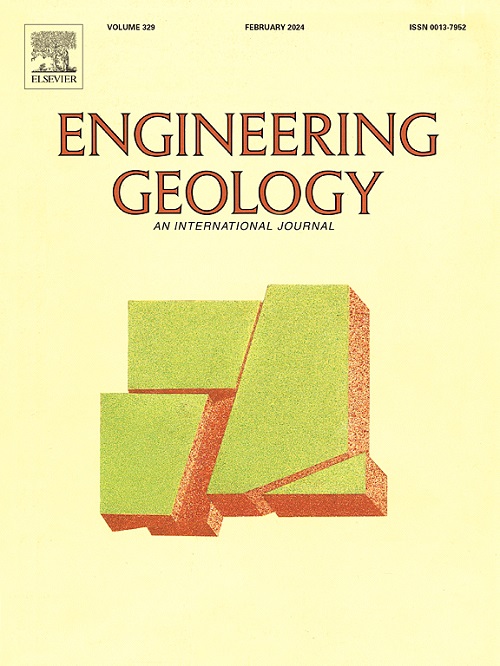Research and monitoring on the water-heat-gas behavior and frost heaving characteristics of coarse-grained fillers under unidirectional freezing conditions
IF 6.9
1区 工程技术
Q1 ENGINEERING, GEOLOGICAL
引用次数: 0
Abstract
Gaseous water migration is a crucial factor in the development of frost heaving in coarse-grained fillers. The goal is to study the gaseous water migration and frost heaving characteristics of coarse-grained fillers. Based on the law of light reflection and refraction, Polymer optical fiber (POF) sensors are proposed to monitor the light intensity in the fillers during the freezing process, so that the intrinsic correlation between the light intensity and the phase transition and migration of water can be analyzed. A series of unidirectional experiments was conducted by using a gaseous water migration system alongside POF sensors. The experimental results show that particle size and initial water content profoundly influence the freezing depth and the volume of gaseous water migration. Larger particle sizes and lower initial water contents enhance gaseous water migration. Fine-grained induced early deformation, and the soil skeleton caused continuous frost heaving, with both mutually constraining each other. By harnessing the data from POF sensor monitoring to forge a light intensity-inflow relationship model, it is found that the study could grasp the phase change and gaseous water migration in real-time. The results of gaseous water migration in coarse-grained fillers provided a valuable supplement to traditional frost heaving theory.
求助全文
约1分钟内获得全文
求助全文
来源期刊

Engineering Geology
地学-地球科学综合
CiteScore
13.70
自引率
12.20%
发文量
327
审稿时长
5.6 months
期刊介绍:
Engineering Geology, an international interdisciplinary journal, serves as a bridge between earth sciences and engineering, focusing on geological and geotechnical engineering. It welcomes studies with relevance to engineering, environmental concerns, and safety, catering to engineering geologists with backgrounds in geology or civil/mining engineering. Topics include applied geomorphology, structural geology, geophysics, geochemistry, environmental geology, hydrogeology, land use planning, natural hazards, remote sensing, soil and rock mechanics, and applied geotechnical engineering. The journal provides a platform for research at the intersection of geology and engineering disciplines.
 求助内容:
求助内容: 应助结果提醒方式:
应助结果提醒方式:


